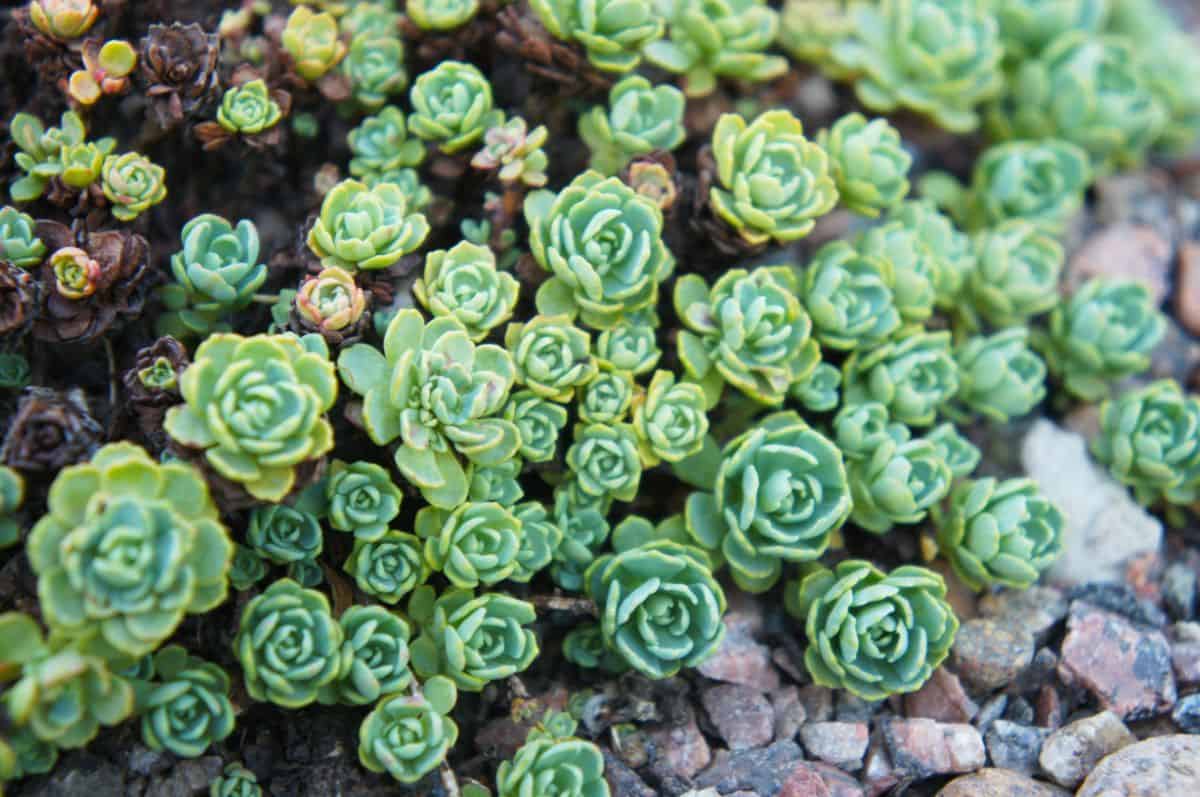
Sedum pachyclados, recently renamed Rhodiola pachyclados, is a petite succulent native to Pakistan and Afghanistan. This easy to care for plant is a favorite of gardeners of all skill levels. It’s also a versatile plant that can be used as ground cover, in hanging pots, or even in projects such as fairy gardens or living walls. It’s also non-toxic to pets.
Jump to:
Sedum pachyclados Appearance
| Name: | Sedum pachyclados |
| Soil: | Well-drained soi |
| Blooming: | Summer |
| Light: | Bright light |
| Water: | Allow soil to dry between thorough waterings |
| Propagation: | Stem cuttings, offsets or seeds. |
Sedum pachyclados, also known as Gray Stonecrop, is a small succulent that tends to stay under about six inches in height. The fleshy leaves are blue-green in color and grow in a rosette shape. In mid to late summer, clusters of white star-shaped flowers appear.
Gray Stonecrop tends to grow in a spreading fashion. Though the stems can cover quite a bit of ground, the rosettes themselves tend to stay under about an inch in diameter.
Caring for Sedum pachyclados
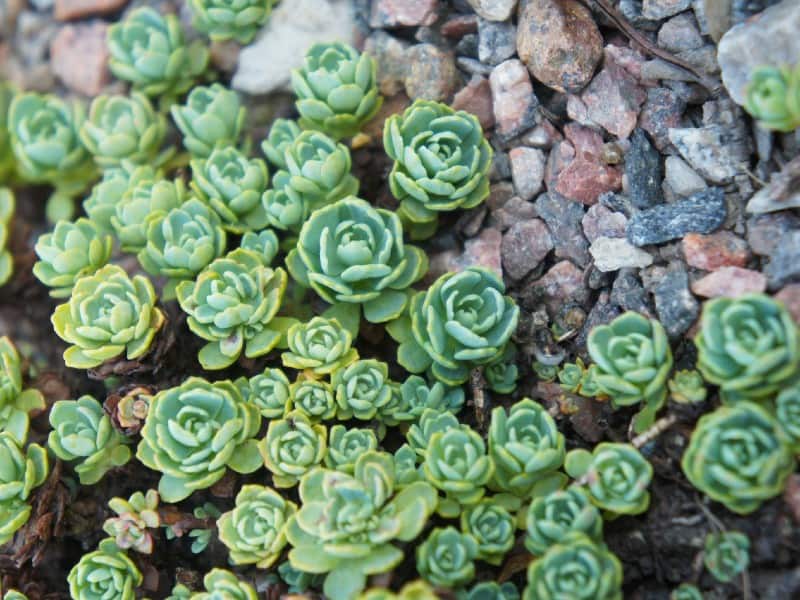
Buy it from:
Like other species of Sedum, Gray Stonecrop is relatively easy to care for, so long as you avoid overwatering. In general, Sedum tend to be hardy succulents that can tolerate less than ideal care.
Light
When grown indoors, Gray Stonecrop will do best in bright light. This is a succulent that thrives with plenty of light but may not do well in low-light environments. If your indoor space does not provide enough light, you’ll need to use a grow light to prevent etiolation.
If you plan on growing your Stonecrop outdoors, full sun is ideal. However, if your succulent has not yet experienced a full day of direct sunlight, you’ll need to increase its light levels slowly over a period of several weeks.
If you introduce too much sun too quickly, your Sedum is at risk of getting sunburned. Sunburn will cause spots of discoloration on the leaves and stem. Sunburned areas cannot be healed, so it’s recommended to go slowly to prevent the plant from getting burned in the first place.
Water
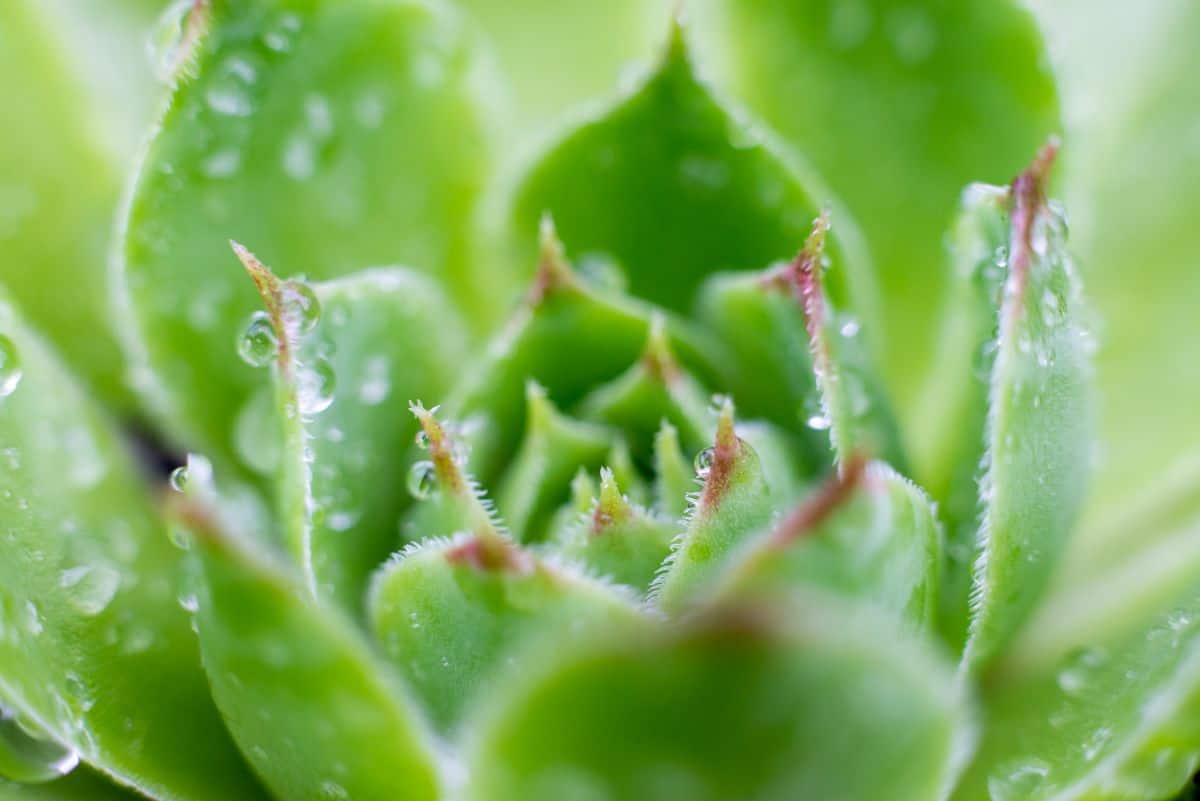
Gray Stonecrop is a drought-tolerant plant that can go up to several months without water. However, it will grow best on a regular but infrequent watering schedule. It’s recommended to water this plant only when the soil has thoroughly dried out to prevent root rot.
No products found.
To ensure that you’re only watering when the soil is dry, you’ll need to check the soil moisture level each time you’re ready to water. Insert your finger or a soil moisture meter into the soil near its base.
Moist soil will need to be allowed to dry out more before the plant can be safely watered, but if the soil is dry, you may proceed with watering.
This method of watering is preferred over a set schedule as it can accommodate changes in the weather that may influence evaporation. Hot, dry weather means your Stonecrop can be watered more frequently, while cool, humid weather may mean longer periods of time between watering.
Temperature
Unlike most succulents, Gray Stonecrop is frost tolerant. It is capable of surviving temperatures down to around -20 degrees Fahrenheit and can be left outside through the winter in most climates.
When grown indoors, Stonecrop does not require any specific care in terms of temperature. This hardy succulent typically does well in consistent temperatures such as those found in most homes and offices.
Soil
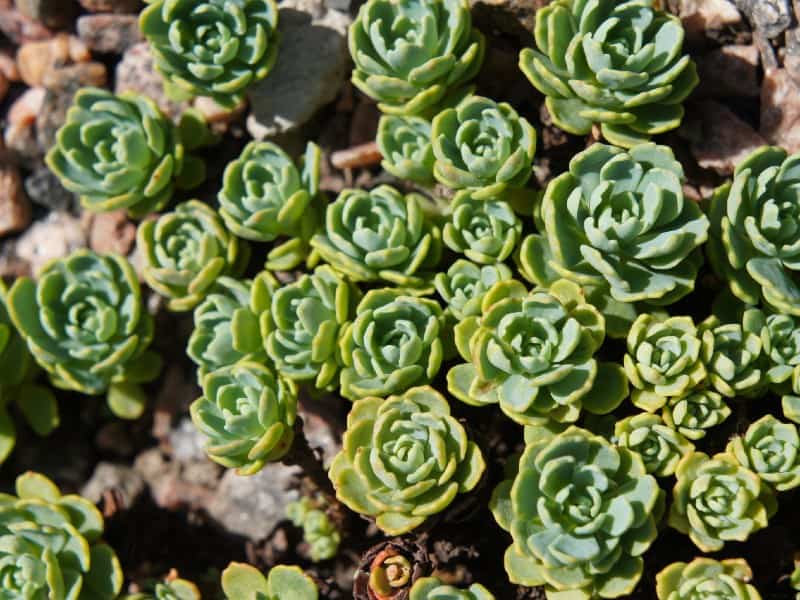
Gray Stonecrop has similar soil requirements to most succulents. It needs soil that provides adequate drainage and airflow. Commercial and homemade soil mixes containing mostly gritty minerals such as coarse sand, gravel, perlite, and pumice are ideal.
When shopping for soil for your S. pachyclados, it’s recommended to avoid soils with large amounts of clay, coconut coir, or peat moss. These ingredients tend to retain more water than most succulents can handle.
If you would prefer not to make your own soil mix, look for a commercial soil that’s made for use with cacti and succulents. This type of soil typically contains the right ingredients and can easily be altered to suit your plants’ individual needs.
Container
The most important quality to look for in any container destined for use with succulents is proper drainage. Gray Stonecrop will not do well if excess water cannot drain away. If the water is not able to escape the container, your succulent is at risk of developing root rot, which can be fatal.
Many gardeners prefer to use terra cotta pots as the material is able to absorb some water from the soil, which can help prevent accidental overwatering. However, other materials will work fine too, as long as they have drainage holes.
Of course, if you don’t live in a climate that experiences extremely cold winters, you can always try planting your Stonecrop outdoors.
Propagating Sedum pachyclados
Gray Stonecrop is as easy to propagate as it is to care for. This plant gets its name because gardeners like to joke that only stones are easier to grow. With little effort, you can propagate your favorite succulent to share with friends and family or just expand your existing succulent collection.
Offsets
Offsets, also known as pups, are the little plantlets that pop up around the base of your mature Sedum. They can be gently removed from the soil using your fingers. It can be helpful to brush away a bit of the soil so that you can retain as many roots as possible.
Once you’re able to remove the offsets from the soil, you’ll need to let your tiny Sedum dry out for a few days so their wounds can callous. This helps to prevent infection by any fungus or bacteria that may be lurking in the soil in its new container.
After the offsets have had a chance to callous, they’re ready to be planted and treated just as you would a mature Stonecrop. Just be sure to plant them in the same fast-draining soil you use for mature succulents.
Cuttings
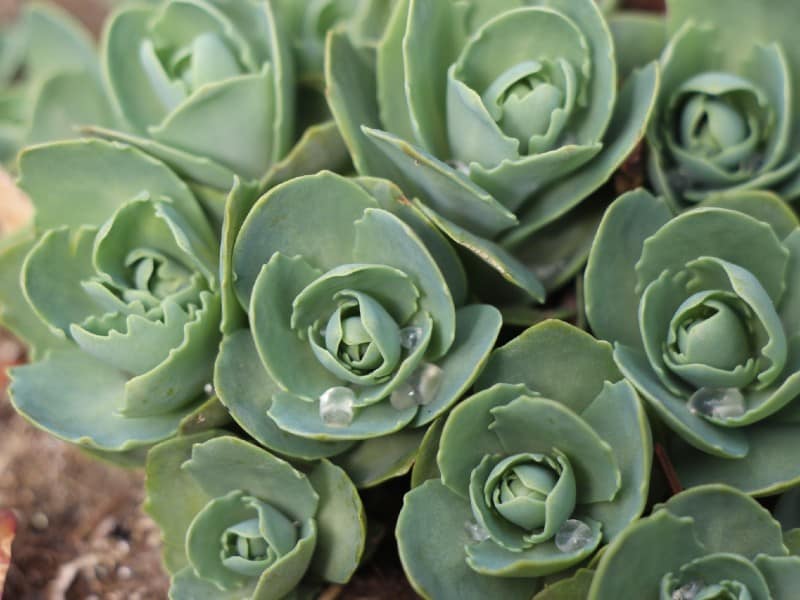
Like other species of Sedum, Gray Stonecrop is incredibly easy to grow with cuttings. Just be sure to take your cuttings using sharp, clean shears or scissors. It’s recommended to choose only the healthiest stem sections for cuttings to further increase your chances of success.
Once you’ve taken your cuttings, propagation is as simple as giving them a few days to callous before setting them on top of well-draining soil to root. You can dip the cut ends into rooting hormone powder before planting if you’d like.
It’s best to keep the soil somewhat moist, but never wet, during the early stage of propagation. Your cuttings won’t be able to absorb water well until they produce roots, so there’s no need to put them on a watering schedule yet.
After a few weeks, you should begin to see tiny roots sprouting from the cut ends of your Stonecrop cuttings. As the roots grow, you can begin introducing your cuttings to a more normal watering schedule.
Seeds
The slowest method of Sedum pachyclados propagation is growing from seed. If you already have this plant in your succulent collection, you can try collecting the seeds yourself after the flowers have been pollinated. However, it’s generally easier to buy the seeds from a seed vendor online.
To sow the seeds, sprinkle them across the surface of well-draining soil. You can keep the soil moist, but not wet, by covering the soil with a sheet of plastic or glass. Many seed trays come with lids for this purpose.
Set the seed tray in a warm area with plenty of bright, indirect light. After a few weeks, the seeds should begin to germinate, and you’ll begin seeing tiny Stonecrop across the soil surface.
Once the seeds have germinated, you can remove the lid and allow the soil to dry out a bit between watering. As the seedlings grow, you can treat them more like a mature plant, but don’t worry about transplanting them until they’re big enough to handle safely.


